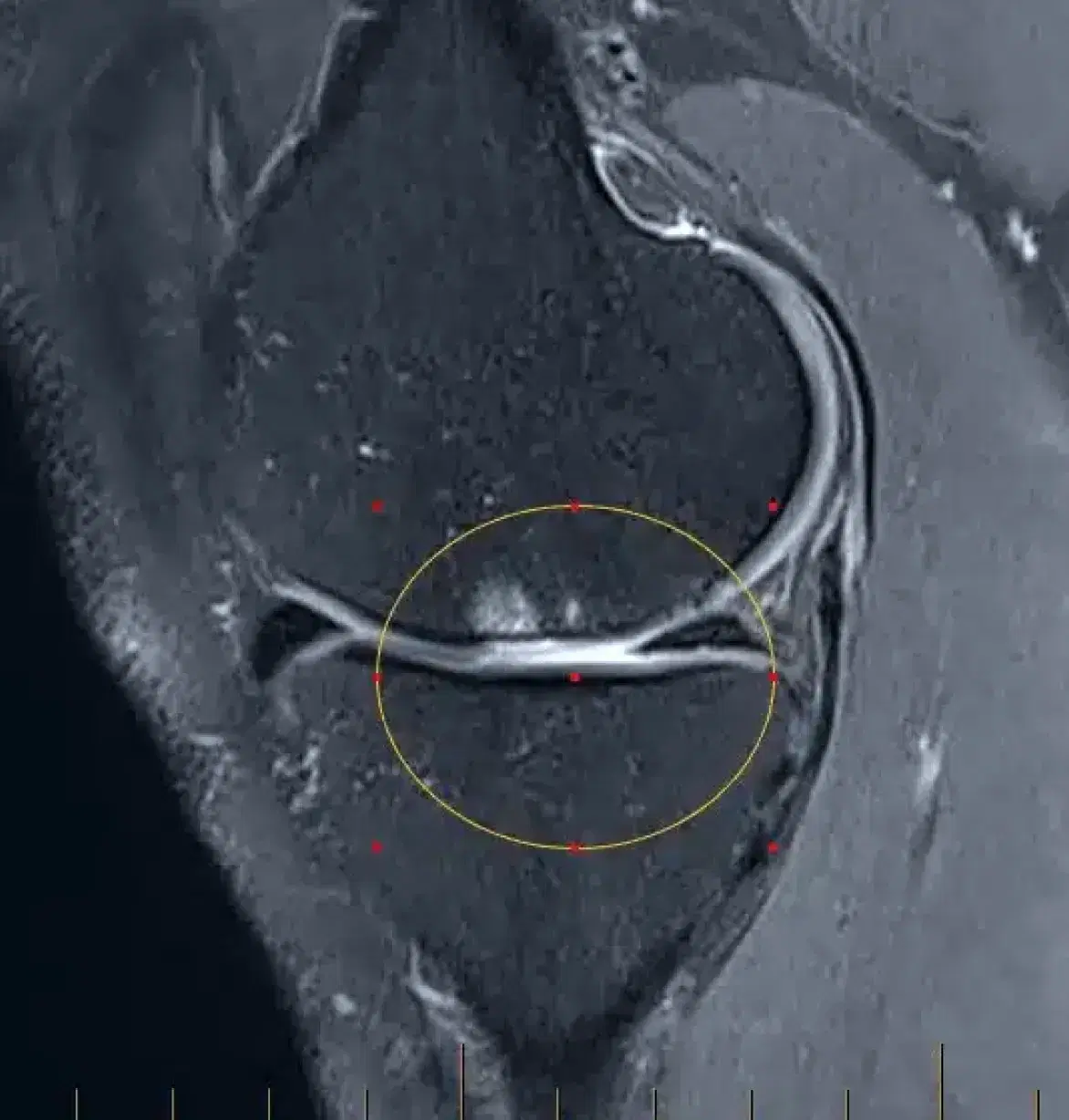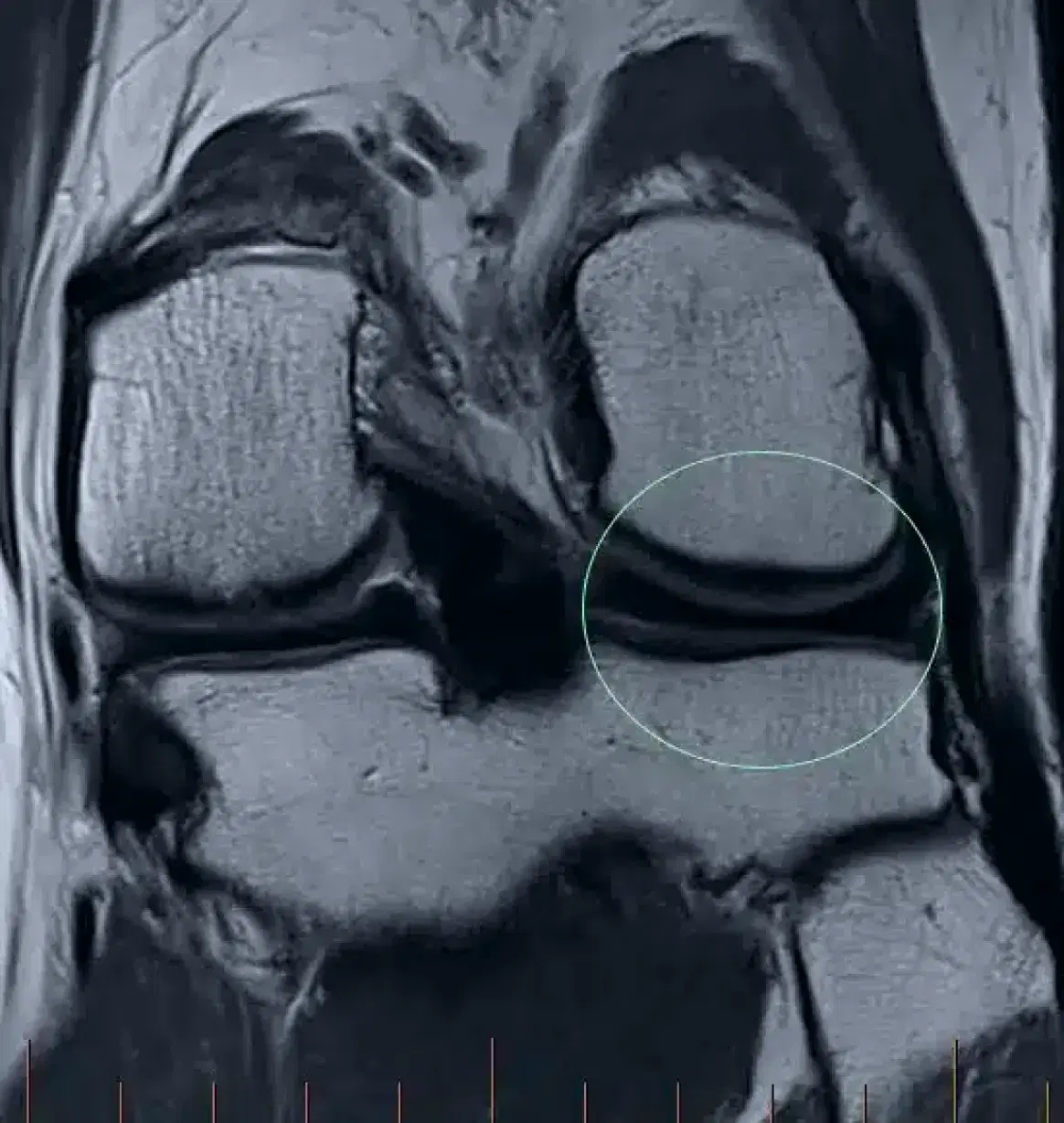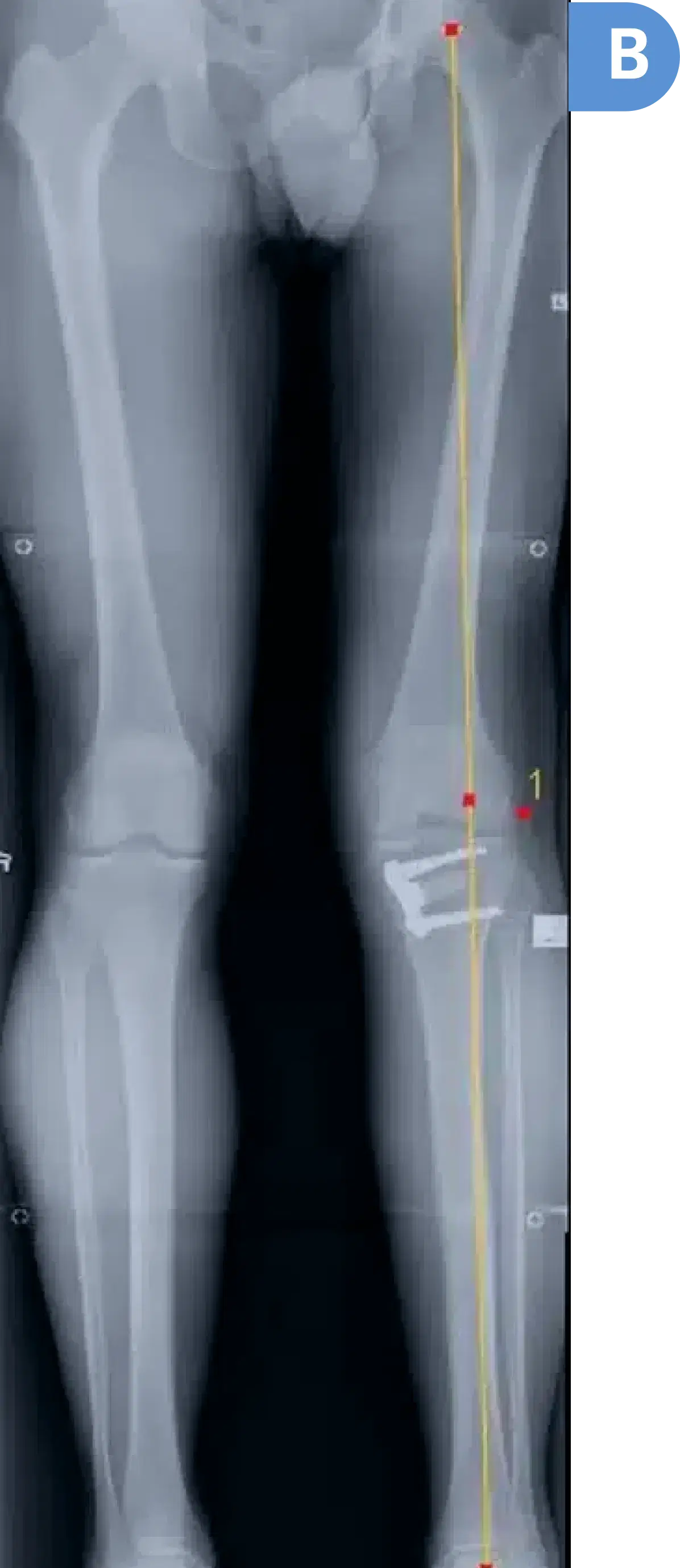
MRI scan of the left knee confirming cartilage damage to the inner side of the knee. (circled)
What is
HTO (High Tibial Osteotomy) is a surgical procedure realigning the upper shinbone to relieve arthritis on one side of the knee.
Dr. Seeto may add a bone wedge at the damaged area. It's suitable for young patients with isolated osteoarthritis in one compartment of the knee, often causing a bowed leg due to inner knee wear.

You will require a MRI scan of your knee to ensure the other pars of your knee are also not damaged with arthritis.
You will require a special long x-ray from taken from your pelvis to your ankles whilst you are standing. This x-ray helps calculate where most of the load is distributed in your knee, the severity of the deformity affecting the knee as well as the degree of correction required to unload the diseased part of the knee.

MRI scan of the left knee confirming cartilage damage to the inner side of the knee. (circled)

MRI scan of the left knee confirming the cartilage on the outer side of the knee is normal (circled)


Pre surgery four-foot standing X-ray showing axis of right leg through the middle of the knee. Axis of left leg through the inner side of the knee (where the diseased cartilage is located)
A
Post-surgery four-foot standing x-ray confirming correction of the axis into the normal outer side of the knee
B
Some x-ray facilities may lack the required cassette length for a "standing four foot leg x-ray." Check with the facility first. Dr. Seeto's office can suggest suitable facilities with the necessary equipment.
A HTO is a major surgical procedure. You will require a general anaesthetic. Dr Seeto utilizes Computer Navigation during the surgery to increase the accuracy of the surgery.
1
Dissect tibia and insert temporary wires under x-ray guidance.
2
Perform the osteotomy using a saw.
3
Open the osteotomy and calculate real-time correction with the computer.
4
Secure the osteotomy with a special plate and screws.
5
Pack bone blocks from the pelvis for accelerated healing.
6
Verify limb alignment correction with an intraoperative x-ray.
HTO surgery is usually for patients under 40 years of age. But this is guide and is dependant on patient expectations, bone quality and desired future functional requirements.
As a general rule the older the patient is, the more likely that they would be more suitable for knee replacement rather than a HTO.

You'll need a brace for 12 weeks after surgery. Initially, it allows full knee straightening and 30-degree bend for 2 weeks. From weeks 2 to 8, the brace will unlock gradually for increased bending.
First 6 weeks: Touch weight bearing for balance only.
Next 6 weeks: Gradually increase weight on leg.
12-week mark: Full weight bearing post-surgery.
On average the surgery takes 2 hours.
The bone will take 12 weeks to heal but the full recovery will take 9-12 months due to the rehabilitation required.
Complications are uncommon but can include
1
Infection
2
Blood clots to the leg (DVT) or lungs (PE)
3
Persistent Bleeding
4
Knee stiffness
5
An unwanted fracture of the bone during or after the surgery.
6
The osteotomy not healing
7
Loss of position of the osteotomy
8
Persistent pain after the surgery
9
Numbness around the scar as well as lower leg
10
Damage to the artery at the back of the leg
11
Damage to the artery at the back of the leg

Dr Seeto in affiliation with Medibank Private and East Sydney Private hospital, offers a program for eligible Medibank Private Members, to eliminate medical out of pocket costs for your Knee Replacement.
The program includes a pre-surgery preparation program, spending the minimal time necessary in hospital, as well as home rehabilitation if necessary.